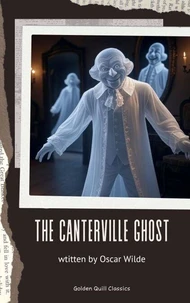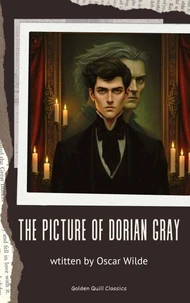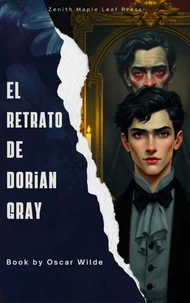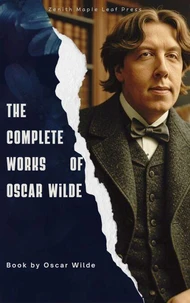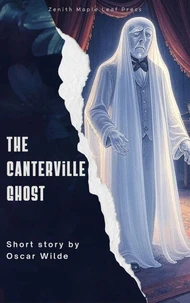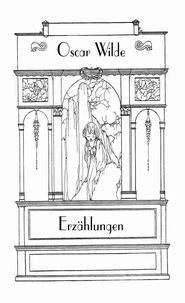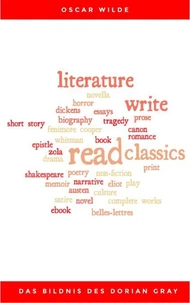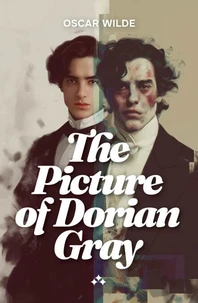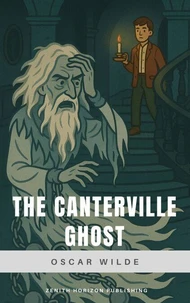The Picture of Dorian Gray & Cecil Dreeme (2 Gay Classics)
Par : ,Formats :
Disponible dans votre compte client Decitre ou Furet du Nord dès validation de votre commande. Le format ePub est :
- Compatible avec une lecture sur My Vivlio (smartphone, tablette, ordinateur)
- Compatible avec une lecture sur liseuses Vivlio
- Pour les liseuses autres que Vivlio, vous devez utiliser le logiciel Adobe Digital Edition. Non compatible avec la lecture sur les liseuses Kindle, Remarkable et Sony
 , qui est-ce ?
, qui est-ce ?Notre partenaire de plateforme de lecture numérique où vous retrouverez l'ensemble de vos ebooks gratuitement
Pour en savoir plus sur nos ebooks, consultez notre aide en ligne ici
- Nombre de pages548
- FormatePub
- ISBN406-633--811499-0
- EAN4066338114990
- Date de parution04/01/2022
- Protection num.Digital Watermarking
- Taille681 Ko
- Infos supplémentairesepub
- ÉditeurMUSAICUM BOOKS
Résumé
In 'The Picture of Dorian Gray & Cecil Dreeme: 2 Gay Classics, ' readers are offered a profound exploration of identity, morality, and the societal bounds of Victorian and early post-Victorian eras. This anthology juxtaposes Oscar Wilde's decadent exploration of aestheticism and immortality with Theodore Winthrop's poignant, though subtler, narrative on gender and the nuanced codes of queer existence before such identities were openly acknowledged.
Both novels utilize differing literary styles-Wilde's ornate prose full of epigrammatic wit contrasts sharply with Winthrop's more restrained, Gothic-infused narrative. This interplay enriches the thematic discourse on the nature of self and society's attempt to mold individual identity. The historico-literary backdrop underpinning this collection highlights a time when burgeoning notions of individuality and queerness were often cloaked in allegory and symbolism.
Oscar Wilde, an icon of literary flamboyance and martyr of gay persecution, contrasts with the relatively obscure Theodore Winthrop, whose work posthumously nourished the roots of homosexual literary exploration. This collection exemplifies the early stages of what would evolve into more explicit representations in 20th-century LGBTQ+ literature. These foundational texts offer readers a unique educational experience, stitched richly with diverse perceptions that resonate through time.
An invaluable resource for students and enthusiasts of both Victorian literature and LGBTQ+ studies, the dual presentation encourages thorough analysis and reflection on how these narratives from over a century ago still significantly influence contemporary discourse on identity and liberty. Engaging with this collection promises not just literary enjoyment but a deeper understanding of the interplay between historical context and evolving themes of personal and societal identity.
Both novels utilize differing literary styles-Wilde's ornate prose full of epigrammatic wit contrasts sharply with Winthrop's more restrained, Gothic-infused narrative. This interplay enriches the thematic discourse on the nature of self and society's attempt to mold individual identity. The historico-literary backdrop underpinning this collection highlights a time when burgeoning notions of individuality and queerness were often cloaked in allegory and symbolism.
Oscar Wilde, an icon of literary flamboyance and martyr of gay persecution, contrasts with the relatively obscure Theodore Winthrop, whose work posthumously nourished the roots of homosexual literary exploration. This collection exemplifies the early stages of what would evolve into more explicit representations in 20th-century LGBTQ+ literature. These foundational texts offer readers a unique educational experience, stitched richly with diverse perceptions that resonate through time.
An invaluable resource for students and enthusiasts of both Victorian literature and LGBTQ+ studies, the dual presentation encourages thorough analysis and reflection on how these narratives from over a century ago still significantly influence contemporary discourse on identity and liberty. Engaging with this collection promises not just literary enjoyment but a deeper understanding of the interplay between historical context and evolving themes of personal and societal identity.
In 'The Picture of Dorian Gray & Cecil Dreeme: 2 Gay Classics, ' readers are offered a profound exploration of identity, morality, and the societal bounds of Victorian and early post-Victorian eras. This anthology juxtaposes Oscar Wilde's decadent exploration of aestheticism and immortality with Theodore Winthrop's poignant, though subtler, narrative on gender and the nuanced codes of queer existence before such identities were openly acknowledged.
Both novels utilize differing literary styles-Wilde's ornate prose full of epigrammatic wit contrasts sharply with Winthrop's more restrained, Gothic-infused narrative. This interplay enriches the thematic discourse on the nature of self and society's attempt to mold individual identity. The historico-literary backdrop underpinning this collection highlights a time when burgeoning notions of individuality and queerness were often cloaked in allegory and symbolism.
Oscar Wilde, an icon of literary flamboyance and martyr of gay persecution, contrasts with the relatively obscure Theodore Winthrop, whose work posthumously nourished the roots of homosexual literary exploration. This collection exemplifies the early stages of what would evolve into more explicit representations in 20th-century LGBTQ+ literature. These foundational texts offer readers a unique educational experience, stitched richly with diverse perceptions that resonate through time.
An invaluable resource for students and enthusiasts of both Victorian literature and LGBTQ+ studies, the dual presentation encourages thorough analysis and reflection on how these narratives from over a century ago still significantly influence contemporary discourse on identity and liberty. Engaging with this collection promises not just literary enjoyment but a deeper understanding of the interplay between historical context and evolving themes of personal and societal identity.
Both novels utilize differing literary styles-Wilde's ornate prose full of epigrammatic wit contrasts sharply with Winthrop's more restrained, Gothic-infused narrative. This interplay enriches the thematic discourse on the nature of self and society's attempt to mold individual identity. The historico-literary backdrop underpinning this collection highlights a time when burgeoning notions of individuality and queerness were often cloaked in allegory and symbolism.
Oscar Wilde, an icon of literary flamboyance and martyr of gay persecution, contrasts with the relatively obscure Theodore Winthrop, whose work posthumously nourished the roots of homosexual literary exploration. This collection exemplifies the early stages of what would evolve into more explicit representations in 20th-century LGBTQ+ literature. These foundational texts offer readers a unique educational experience, stitched richly with diverse perceptions that resonate through time.
An invaluable resource for students and enthusiasts of both Victorian literature and LGBTQ+ studies, the dual presentation encourages thorough analysis and reflection on how these narratives from over a century ago still significantly influence contemporary discourse on identity and liberty. Engaging with this collection promises not just literary enjoyment but a deeper understanding of the interplay between historical context and evolving themes of personal and societal identity.



